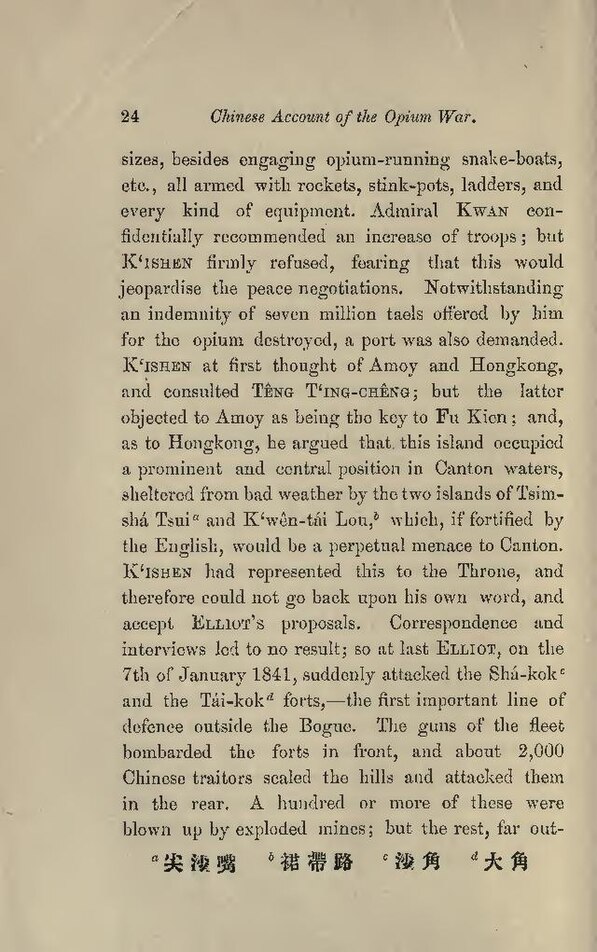sizes, besides engaging opium-running snake-boats, etc., all armed with rockets, stink-pots, ladders, and every kind of equipment. Admiral Kwan confidentially recommended an increase of troops; but K‘ishen firmly refused, fearing that this would jeopardise the peace negotiations. Notwithstanding an indemnity of seven million taels offered by him for the opium destroyed, a port was also demanded. K‘ishen at first thought of Amoy and Hongkong, and consulted Têng T‘ing-chêng; but the latter objected to Amoy as being the key to Fu Kien; and, as to Hongkong, he argued that this island occupied. a prominent and central position in Canton waters, sheltered from bad weather by the two islands of Tsim- shá Tsui[1] and K‘wên-tái Lou,[2] which, if fortified by the English, would be a perpetual menace to Canton. K‘ishen had represented this to the Throne, and therefore could not go back upon his own word, and accept Elliot's proposals. Correspondence and interviews led to no result; so at last Elliot, on the 7th of January 1841, suddenly attacked the Shá-kok[3] and the Tái-kok[4] forts, the first important line of defence outside the Bogue. The guns of the fleet bombarded the forts in front, and about 2,000 Chinese traitors scaled the hills and attacked them in the rear. A hundred or more of these were blown up by exploded mines; but the rest, far out-
Page:Chinese account of the Opium war (IA chineseaccountof00parkrich).pdf/40
This page needs to be proofread.
